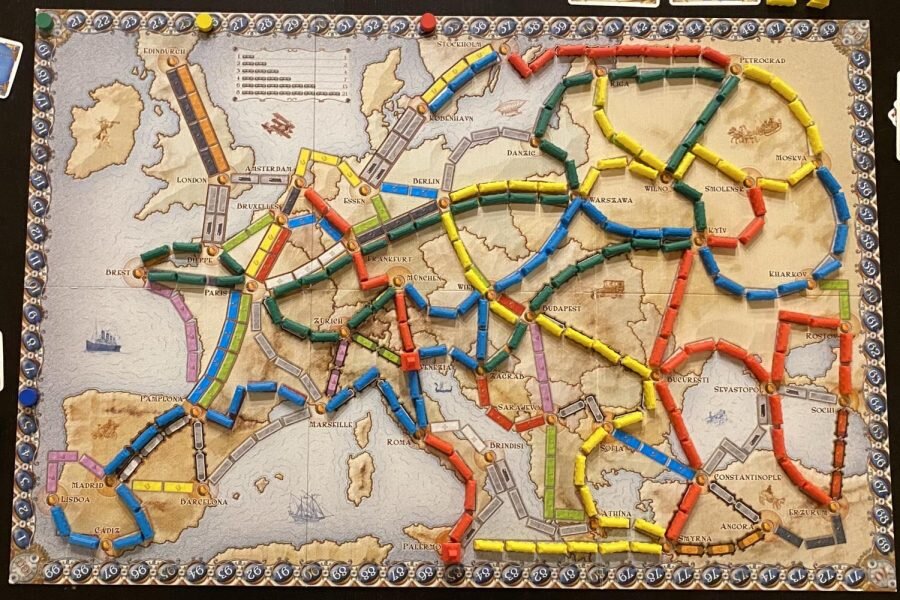Why thinking like a board game is the key to copywriting success.
Do you like board games?
I’ve dipped my toes in the wide world of board games in recent years (it’s not just Monopoly you know).
One of my faves is called Ticket to Ride.
No relation to the Beatles song as far as I’m aware. But it has a lot to do with trains.
Playing it recently, I was reminded of why it works so well.
Simple enough to be accessible but with enough strategy to make you want to come back for more.
The basic premise involves using coloured train cards as currency to build designated routes on a map, before the end of the game.
I also recently went on an actual train.
Sitting on the train, glasses fogging up from the mask over my face, I began to think about the difference between board game and reality.
They’re very different experiences, in case you hadn’t noticed.
The difference between them also points to why copywriting works and why it differs to other forms of writing, like journalism.
You see…
Journalists write about the world as it is…
There are a number of differences between a board game and a train ride.
One is a fantasy and bags of fun and the other is very real and frankly, pretty mundane.
But there is one difference that I find more interesting and is similar to the difference between copywriters and journalists.
The analogy doesn’t follow completely.
Being a journalist is an awesome job and creative and skilled in other ways. I’m not saying it’s boring and rubbish.
But a train has one purpose. To get you from A to B.
Unless you’re a train fanatic, there’s no other motivation for using it and at a basic level there’s nothing more to the experience that getting you to where you need to be.
Likewise, the job of a journalist in its most basic form is to report on the world as it is. Warts and all.
Often mostly warts.
They’re not writing to get you to do anything else as such, the only end goal is for you to read it and be informed.
…Copywriters write about what could happen.
A board game like Ticket to Ride has a secondary purpose.
The rules of the game are designed for you to finish the game yes, but it’s not in the game ending that you get a sense of satisfaction.
Its true purpose is the thrill of the chase. Trying to win. The possibility that this time, you might do it.
It’s also the shared experience of playing with friends or family. The passing of time doing something fun.
And it’s the unique concept of this particular game. The art and the world that’s been built by the creators to make it unique to anything else you’ve played before.
In that way, it’s a little like copywriting.
More than words
When copywriting does its job - Communicating one simple idea in a way which is engaging, eye-catching and memorable – it gains an added purpose.
The actual words themselves are great, sure, but they’re not the end goal. Their purpose isn’t to be read, admired and then left alone.
They’re supposed to compel the reader to action.
How do they do that?
The same way a board game like Ticket to Ride, gets you to have fun.
It’s simple. It takes one idea and doesn’t deviate from it.
It’s interesting and exciting, using colourful illustration to draw you in.
And it knows what it wants to achieve. The outcome of Ticket to Ride is always the same.
One person wins because they have more points than anyone else.
If copywriting works, the outcome should always be the same. The person reading it, goes on to buy a product (or at the very least become an active member of an audience).
So, next time you’re writing something to sell, think, is this more like a train-based board game or is it making me bored, like being on a train?


